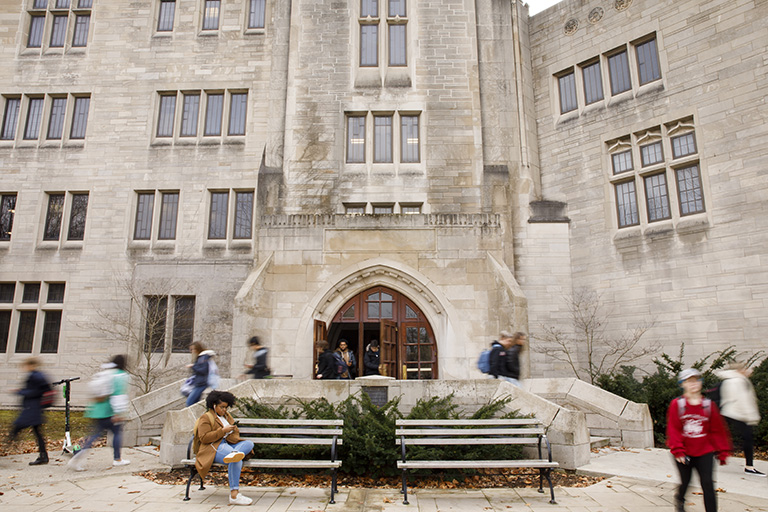Building communities of diversity and inclusion
In February at IU, we have been celebrating Black History Month, during which we have stressed that diversity and inclusivity are and must remain among the cardinal virtues for all of our campuses.
As educators, we insist that our students—and we ourselves—seek to understand and evaluate the ideas, assertions and arguments that come from other perspectives, traditions, disciplines and beliefs. Indeed, we know that diverse perspectives, information and worldviews, along with the willingness to subject them to rigorous examination, debate and discussion, help us understand ourselves and our beliefs, our assumptions and our knowledge more deeply and more thoroughly.
IU's Bicentennial Year, which began on July 1, 2019, and which will continue through June 2020, has provided us with an extraordinary opportunity to reflect upon our collective efforts to build communities of diversity and inclusion, strengthen the diversity of our campuses and ensure that IU is a welcoming home where all are respected and treated with civility and human dignity, no matter our race, ethnicity, cultural backgrounds, gender, political persuasion, religious beliefs, socioeconomic status or sexual orientation.
Today, at the dawn of the university's third century, the university is as diverse and accessible as it has ever been, thanks, in important part, to the overwhelming success of IU's Bicentennial Campaign, which has helped us to provide record student financial aid.
Last fall saw another record for minority student enrollment across all IU campuses with IU's minority student body exceeding 20,000 for the third consecutive year. IU Bloomington has seen record numbers of African American, Asian American and Hispanic/Latino students, and the campus now has over 9,000 minority students—the most of any IU campus and representing a doubling of this number since 2007. The minority composition of domestic IU students now closely approximates that of our state.
Increasing minority enrollment at IU has been—and will continue to be—one of our highest priorities as we embrace our responsibility, as Indiana's flagship public university, to reflect our state's changing population. But our efforts in this area go beyond numbers. We are also striving to foster greater "interactional" diversity—ensuring that IU community members who come from diverse backgrounds have the opportunity to interact with one another in friendly, meaningful and educationally purposeful ways. IU's Office of the Vice President for Diversity, Equity and Multicultural Affairs supports six cultural centers that conduct programming, outreach, advocacy and events for IU students of all backgrounds. It also supports the African American Arts Institute, which, after a more-than-40-year existence, remains the only organization of its kind in the nation.
IU is also taking the fullest advantage of this unique year in its history to bring to light the unknown and underappreciated stories of the women, underrepresented minorities and other individuals who have helped to build and strengthen the university over two centuries.
Through several signature projects of the IU Office of the Bicentennial, including the Bridging the Visibility Gap project, Bicentennial Publication and Media Series, IU Historical Marker Program, Bicentennial Oral History Project, and Bicentennial Traveling Exhibit (look for the "Big Red Bus" soon at an Indiana town near you!), we are aiming to share a more complete historical narrative of IU that is more inclusive of the people whose stories deserve to be told and whose impact has not always been truly appreciated by contemporary students, faculty, staff, alumni and friends of the university.
Read the full presidential update

